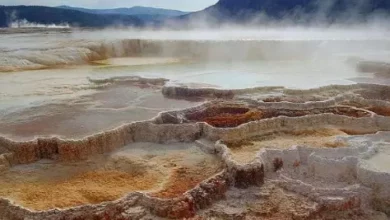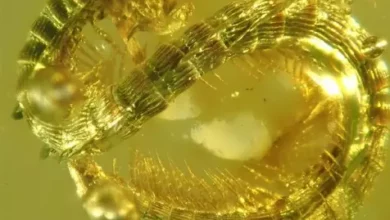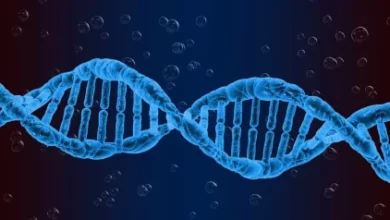What is life like in the great depths?
It is often said that we know more about the surface of the Moon than about the depths of the ocean. The deepest known point of the earth’s crust is the Mariana Trench, located in the Pacific Ocean and with a maximum depth of 10,984 meters. It was descended for the first time on January 23, 1960, by Don Walsh and Jacques Piccard aboard the Trieste bathyscaphe.There, deep in the Challenger Abyss, thousands of meters in the reach of sunlight, they gazed out from a reinforced window under the bathyscaphe and watched in amazement as strange living things moved across the ocean floor. It is certainly not something one can find on the surface of the Moon.
The abyss
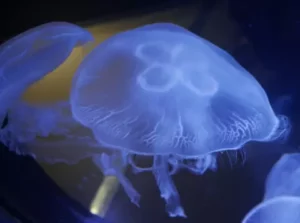
The abyssal zone is called that portion of the water column located below 4,000 meters deep. This region occupies 70% of the total oceanic surface. Below the abyssal zone is the hadal zone (French word that means “place of death”, referring to the underworld of Greek mythology, hades).
The hadal zone corresponds to the deepest parts of the ocean, the sea trenches or ocean trenches, located below 6,000 meters deep. Only 2% of the marine surface corresponds to this region.
The environmental conditions of the great depths
The environmental conditions that exist in the deep ocean are very different from those that exist anywhere else on the planet.
Darkness
The feature that first springs to mind is the absence of sunlight . Due to the physical properties of light, it has a limited penetration capacity in water. Red light disappears at a shallow depth, while blue light is the one that can travel farther underwater.
Turbidity also affects the amount of light that can reach certain depths. However, it is considered that from 200m of depth the solar light is non-existent . This is the limit that divides the photic zone (the one where sunlight reaches) from the aphotic zone (the one that lies below). In the aphotic zone, the only sources of light are the organisms that generate it.
The cold and the pressure
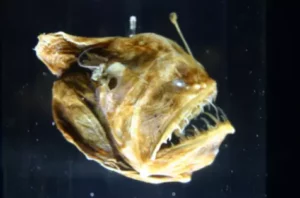
Another characteristic is the gelidity of the water , since it is at a temperature of about 4 ° C. In addition, the pressure increases as the water column descends, due to the weight of the water above it. The pressure increases steadily at the rate of one atmosphere for every 10 meters that are descended, reaching 1,000 atmospheres in the deepest part of the Mariana Trench. Still, as Walsh and Piccard discovered, life is capable of adapting to these extreme conditions.
Lack of oxygen
There is another factor that largely determines the life of organisms in the abyssal zone, and it is the shortage of dissolved oxygen in the water . It may seem somewhat surprising, considering that colder seas contain a higher concentration of oxygen (the solubility of gases in water is inversely proportional to temperature) and that the water in the abyssal zone has a freezing temperature.
However, we must bear in mind that the main source of oxygen in seawater is the atmosphere. Although algae produce oxygen thanks to photosynthesis, it has a poor solubility in water (the opposite of CO 2 ), so it escapes into the atmosphere. Therefore, the oxygen in seawater comes from the atmosphere, gradually dissolving into deeper waters. But part of that oxygen is spent in the respiration of organisms that live in surface waters, so the amount that reaches the abyssal zone is scarce.
Adaptations of life to the deep ocean
Food in the abyssal zone is scarce. In almost any ecosystem, the base of the food chain are the primary producers, the plants, which produce the nutrients that serve as food for other organisms. However, in the absence of light, plant life cannot exist.
Adaptation to food shortages
Much of the food in the abyssal zone comes from the upper zones , from where it falls as dead matter. Part of this organic matter is the so-called marine snow, small particles that have a whitish appearance when illuminated by the light of a bathyscaphe, hence its name. Sea snow descends slowly , with a speed of about 20 meters a day, it can take weeks to reach the seabed. In the process it is partially digested by microorganisms.
Due to the scarcity of food, two adaptations of the abyssal fauna are to have large jaws and flexible stomachs , so as not to waste any prey that is within reach of the predator, even if it is larger in size.
Adaptation to lack of oxygen
Due to the low temperature of the water and the lack of oxygen, the abyssal fauna has a slowed metabolism , there are notable cases of gigantism in some species and the usual technique of prey capture is based on stalking and attracting prey rather than in pursuit.
Another survival strategy in oxygen-poor environments is the high concentration of hemoglobin in the blood , which is responsible for its transport, to ensure that it reaches all tissues. The bodies of abyssal animals can be black, red (it reflects light badly at great depths) or be transparent , all as part of strategies to go unnoticed.
Adaptation to the lack of light: bioluminescence
As already mentioned, there are organisms capable of generating light, the so-called bioluminescence . This light can be used to recognize organisms of the own species, to attract prey or as a form of camouflage in some predators, by blurring the silhouette of the predatory fish. There are, in general terms, three types of bioluminescence : diffuse, localized or produced by specialized organs.
Diffuse bioluminescence is produced by unicellular organisms, which can be free-living or associated with other organisms, such as some sea fleas (amphipods) that will present light-emitting spots on their body.
Localized bioluminescence is similar to the previous one, in that it is produced by associated microorganisms, but these are found in localized parts of the host animal’s body.
Finally, bioluminescence through specialized organs is what some fish or mollusks produce in specific organs to attract their prey. Bioluminescence is produced by molecules called luciferins , which react in the presence of oxygen, releasing energy in the form of light. The enzymes that catalyze this process are called luciferases.
The eyes of abyssal fish are usually sensitive to blue light , since it is the one that travels the greatest distance through the water, and bioluminescence is also usually of this color, although it is oriented to recognize organisms of the own species it may consist of the emission of red light. A well-known and spectacular case of bioluminescence is that produced by some dinoflagellate protozoa that live in coastal areas, and that illuminate the water of some beaches in blue.
A common use of bioluminescence, as discussed, is the attraction of prey. This is the strategy of the vampire squid, Vampyroteuthis infernalis , which has small light-generating organs, called photophores, scattered throughout its body. This squid does not have black ink, as it would be useless in the abyssal depths. Instead, it can expel a cloud of sticky, luminous mucus to confuse predators .
The common monkfish , Lophius piscatorius , has some characteristics of the abyssal species despite not being so. Its common name in English is angler , which means angler. The example of monkfish is very illustrative, despite not being an abyssal species, as it is a fish that can usually be found in fishmongers.
Monkfish inhabit depths between 200 and 1,000 meters, in the aphotic zone, but not in the abyssal zone. This fish lives attached to the seabed, being able to bury itself in the sediments, exposing only its head. It has a large mouth and between the eyes it has an elongated organ topped in a bulge. It is a specialized bioluminescent organ, with which the fish can emit light at will and thus attract prey directly to its mouth. In addition, the light prevents unsuspecting prey from being able to see the fish behind.
There are numerous species of deep-sea fish that follow a similar strategy, but these remain floating in the water instead of resting on the bottom.
Monkfish belong to the order Lophiiformes, fish that have a large mouth and have bioluminescent organs. Another fish of this order is the black devil or abyssal monkfish , Melanocetus johnsonii , perhaps the best known and most representative abyssal fish.
A characteristic related to the reproduction of these fish, although it is not exclusive to them, is that the males are much smaller than the females, and to reproduce the male can stick his body to that of the female, which absorbs the body of the male and fuses your circulatory systems . In this way, a female can have one or more males attached to her body with which she can reproduce. This solves the problem of pairing at great depths in the dark.
Pressure adaptations
Regarding the adaptations to pressure , they entail a series of biochemical and physiological modifications in animals. They have small bones and lack organs like the swim bladder , which could compress and cause fatal damage to the animal.
The cell membrane and liver of deep-sea fish contain a high proportion of low-density lipids, which confer high fluidity and avoid suffering the effects of pressure on these structures. It is the same adaptation that animals that live in cold climates have, and it is estimated that this type of modification to live in high pressure conditions is equivalent to that necessary to survive temperatures of -20 ° C.
Jellyfish have less trouble resisting high pressures, as their bodies do not have rigid structures and are largely filled with seawater, so that the internal pressure is similar to the external one.

